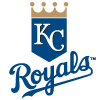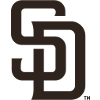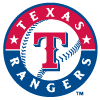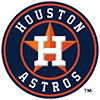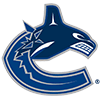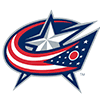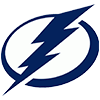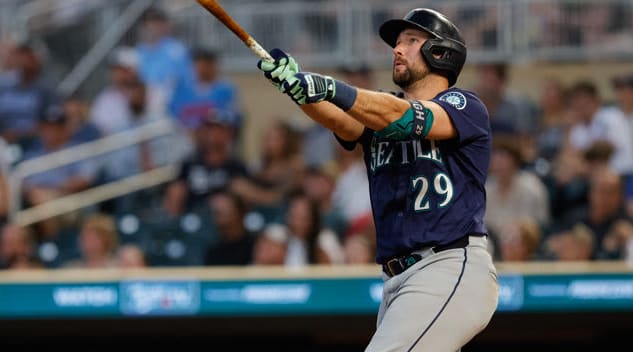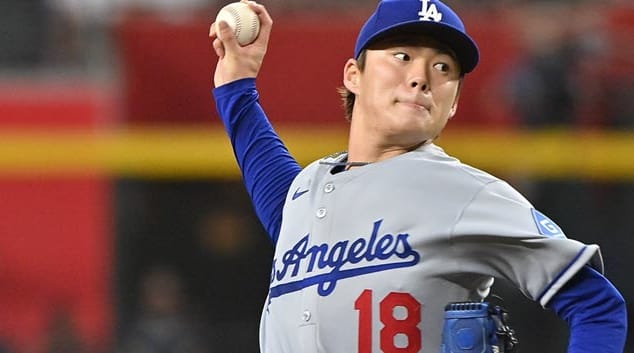If it were a fiscally feasible endeavor, I would have become a snowbird before turning 30.
Instead, I settle for small doses of Arizona, which have made a good impression during my trips to Phoenix for Fall League games in October and November, and most recently for spring training over February and March.
As for the "Oven Door" days of summer from May through August? I'll enjoy the stories from those who have visited during the time of year where car windows spontaneously shatter and breakfast foods can be cooked on the sidewalk. At least my patio is an extra beer refrigerator four months out of the year.
The most recent trip included a few firsts. Last weekend, I participated in my first NL-only LABR auction after two seasons in the online mixed draft. I also witnessed the end of a 73-day drought with a rare desert thunderstorm while co-hosting the AL-only auction broadcast from the 10th floor balcony of the Arizona Republic offices. Being in Phoenix for six days also made it possible for Bernie and I to record our first "live" episode of the Short Hops Podcast. (subscribe through iTunes)
Most of the mock drafts I've done since December have been of the 12-15 team mixed league variety. After all, it's great prep for the RotoWire Online Championship and NFBC Main Event later this month, but the added challenge of scraping the bottom of the barrel for talent in an "only" league is one that every
If it were a fiscally feasible endeavor, I would have become a snowbird before turning 30.
Instead, I settle for small doses of Arizona, which have made a good impression during my trips to Phoenix for Fall League games in October and November, and most recently for spring training over February and March.
As for the "Oven Door" days of summer from May through August? I'll enjoy the stories from those who have visited during the time of year where car windows spontaneously shatter and breakfast foods can be cooked on the sidewalk. At least my patio is an extra beer refrigerator four months out of the year.
The most recent trip included a few firsts. Last weekend, I participated in my first NL-only LABR auction after two seasons in the online mixed draft. I also witnessed the end of a 73-day drought with a rare desert thunderstorm while co-hosting the AL-only auction broadcast from the 10th floor balcony of the Arizona Republic offices. Being in Phoenix for six days also made it possible for Bernie and I to record our first "live" episode of the Short Hops Podcast. (subscribe through iTunes)
Most of the mock drafts I've done since December have been of the 12-15 team mixed league variety. After all, it's great prep for the RotoWire Online Championship and NFBC Main Event later this month, but the added challenge of scraping the bottom of the barrel for talent in an "only" league is one that every serious player should take on each year.
The full results of the auction are available here, but I will break down my approach and the roster I assembled in the space below.
Pre-Auction Plans
For those who have never been in an auction before, I highly recommend making the switch for at least one of your leagues this season. Over time, I have become much more willing to change my strategy on the fly, mostly because of the uncertainty an auction environment brings. After the AL broadcast Saturday night (AL results here), one key observation I made was that there isn't a projected $40 hitter in the NL auction pool. In the AL, Mike Trout fetched $45 and Miguel Cabrera cost $42, but I could not imagine a scenario where the likes of Andrew McCutchen, Paul Goldschmidt or Carlos Gonzalez were going to significantly exceed the mid-30s in price.
After discussing it with Liss on Sunday morning, it became clear that Clayton Kershaw had a potential value of $40+, but he was highly unlikely to reach that price, especially in a setting where industry players are often reluctant to pay the premium for elite pitching. The potential gap between auction cost and value with Kershaw would likely carry through the top 8-10 starting pitchers on the board, if not more. That is, if Kershaw were to sell at $35 but the projections pointed to $42 in value, that same $7 profit might exist with guys like Stephen Strasburg, Jose Fernandez and Cliff Lee. At the very least, I had to bid up Kershaw in a way that prevented another owner from getting an even better deal than the expected $7 profit. If for example, he were to sell at $30, Kershaw might have provided a $12 profit, which is enormous for what many players will consider to be a very stable commodity. Consider the ramifications of Mike Trout going for $33 instead of $45 - the room would never let it happen - but the general attitude and approach toward premium pitchers is just different at the current time.
The pre-determined price I had for Kershaw was $34, and his sale was going to be one of the forks in the road as far as how my team would be built, especially my pitching staff.
Regardless of whether or not I had Kershaw, I was not planning on paying the premium for closers. This was also the function of some projection-based considerations and the typical one-category nature of relievers, although in NL-only formats the elite options can help offset the low strikeout rate of a back end starter. I felt that I could finish between seventh and ninth in saves by targeting a few high-leverage relievers capable of closing out games if needed, and then backfilling via trade or FAAB throughout the season.
One other plan I had in advance of the auction was to be aggressive and quick with my bidding on the top-tier players. While I do not have scientific evidence to back up the claim, I believe that making jump bids and even starting players at higher amounts is beneficial in that it shortens up the time that each owner at the table has to make a decision about that particular player. Many of my early throws were players that I did not necessarily want, but I still nominated them at 75-80% of their projected value on the off chance that the room would hesitate and leave me a bargain. Even on players that I did not nominate, I made a point to speed up the process by staying in on players as long as I could responsibly do so.
The Roster
C - Wilin Rosario, $20 - I expected Rosario to go for $22 in this format, and at the time he came up I was willing to pay that much. His defense is still a problem, but the Rockies don't have a better backup option to handle that role with Mike McKenry currently projected to serve in that capacity. Over the past two seasons, no catcher has a higher ISO than Rosario (.225), while he has also led the position in home runs (49), ranked sixth in runs (130) and tied for fourth in RBI (150) despite having fewer plate appearances (892) than many of the other top backstops.
C - Travis d'Arnaud, $8 - Admittedly, there was major concern that d'Arnaud would get too expensive since he was the last quality No. 2 catcher on the board when he was nominated. Fortunately, there was an inflated middle tier of players in this auction, which dried up many budgets. If he hits .255-.260 with 10 homers and 45 RBI, it's a break-even scenario. The track record here points to potential for more, but health has been an obstacle for d'Arnaud in each of the last two seasons.
1B - Paul Goldschmidt, $33 - For some, Goldschmidt is the best hitter on the board in the National League. As a result of the lack of $40 hitters in the pool, I expected to be pushed out of the bidding on Goldschmidt if the price went over $35. Over the past two seasons, Goldschmidt has put up numbers on the same level as Prince Fielder, while also chipping in 33 steals. I'm not looking for more than 10 steals in 2014, but an average right around .300 with 30+ homers and plenty of RBI will actually generate profit at this price.
2B - Aaron Hill, $20 - At the time Hill was sold, I felt like I paid sticker and had a brief moment of regret. The feeling faded as the other second basemen came up over the next couple of hours as Anthony Rendon ($18) and Neil Walker ($17) commanded premium prices when the lack of depth at the position was realized. Injuries slowed Hill last season, but he returned more value than any other player at the keystone in the NL with a .302/.360/.522 season in 2012.
SS - Brandon Crawford, $3 - There's nothing special about Crawford in terms of his roto contributions, but he's a good defender at a premium position and should see enough playing time to rack up useful counting stats. Even if he's a $5 player at season's end, this price is fine.
3B - Eric Chavez, $3 - The function of spending so much on Goldschmidt, Braun, Freeman, Rosario and Fernandez, was another spot on the roster that didn't have much of a budget. I expected Chavez to cost a little more than this. Even as a part-time player, Chavez generated $7 in value last year and it doesn't seem unreasonable to look for a repeat.
MI - Derek Dietrich, $1 - It's easy to write off Dietrich after he hit .214 and carried a .275 OBP over 57 games with the Marlins last season, but it was his first exposure to big league pitching and he still managed to provide pop (nine homers) in 233 plate appearances while swatting 11 more homers at Double-A Jacksonville. Add it up, and he's a 20-homer guy at age-23 between Double-A and the big leagues, and now he's only looking up at Rafael Furcal and Casey McGehee at second and third base, respectively.
CI - Freddie Freeman, $27 - Even as a .259 20-90-90 guy in 2012, Freeman was worth $23 in this league. He missed 15 games last season, but still churned out $37 thanks to a spike in AVG (.319) and a very good second half (.335/.408/.544). Maybe home-run totals in the mid-20s are his peak, but Freeman is only 24 while his eye at the plate has continually improved since his arrival in the big leagues.
UT - Tyler Moore, $2 - There was no particular reason for the extra dollar here, other than I had it available at a time where there might have been one team capable of topping a $1 bid. The problem with Moore could be playing time, as he's been limited to 349 plate appearances for the Nats over the past two seasons. It's also possible that he's a Quad-A player, but Moore has shown impressive patience and power at Triple-A Syracuse and may just need to land in another organization with a clearer path to at-bats to become useful.
OF - Ryan Braun, $33 - Last year, Braun would have been the $40 hitter in this pool. He hurt his thumb in May, never seemed to recover, and was suspended in June for his connection to Biogenesis. Braun's 2012 season was the best we've seen in his career, and that followed the positive steroid test in the 2011 playoffs and subsequent denial of PED use that spring. Now 30 years old, the days of 30 steals are probably over, but I'm not writing off the possibility of a return to .300+ with 30-100-100 as long as the thumb in a non-issue. Prior to the thumb injury, which seemed to first knock him out of the lineup on May 13, Braun was hitting .306/.396/.579 with eight homers and 26 RBI (a 41-HR, 132-RBI pace over 162 games). I would have gone to $35 on him.
OF - Denard Span, $11 - For all that went wrong in Washington last season, Span was one of the few things that seemed to go right. The elite on-base skills he flashed with the Twins way back in 2008 and 2009 appear to be gone, so it's more likely that his three-year average (.331) is the guide here. With a power-heavy core, getting a 20-steal threat capable of staying in the leadoff role in a potent Washington lineup was a good fit on my roster.
OF - Gregory Polanco, $8 - Getting crushed by the other owners who were less aggressive early in the middle tier definitely took a toll on the quality of my outfield. Polanco doesn't appear to be far from taking over right field for the Pirates after spending his second half at Double-A Altoona in 2013 and experiencing a taste of Indianapolis late in the year. Most likely, he'll be reserved for the first two months of the season while one of my reserve outfielders fills in, but injuries at the big league level could push him up before the Super Two cut-off if Polanco mashes in the upper levels of the Pirates' system to begin the year.
OF - Charlie Blackmon, $5 - By comparison, Corey Dickerson went for $10, and while Dickerson is younger than Blackmon, I don't think there is much to separate the two right now. Drew Stubbs seems like a candidate to platoon and start in center field against lefties, which will slide Carlos Gonzalez back to left, but Blackmon and Dickerson are competing for the left field job against right-handed pitching, and the winner may also land in the leadoff spot for the Rockies.
OF - Juan Lagares, $1 - Lagares might create another hole in my outfield, unless the Mets decide to utilize his glove in center field, flank him with two former center fielders in Curtis Granderson and Chris Young, and put Eric Young Jr. in a fourth outfielder role. Just 24 years old, Lagares has played only 17 games at Triple-A and more seasoning might be a better plan for his development at the plate than limited at-bats when the team faces a left-handed starter. If he sticks, I'm hoping for cheap speed (8-10 steals) and little else.
P - Jose Fernandez, $27 - As I've written before, Fernandez just kept getting better last season, while finishing the year with a 1.18 ERA and 0.80 WHIP (76:16 K:BB) over his final nine starts (61 innings). If Kershaw can earn $40+, why can't Fernadez top $35? The price for Fernandez ended up matching Strasburg, and I'd prefer Fernandez anyway (both would have been lovely).
P - Kris Medlen, $16 - Medlen lacks the strikeout upside that some of the other second-tier starting pitchers possess, but the second-half trend and stretch run performance (2.08 ERA, 0.99 WHIP) look much more like his ridiculous 2012 numbers (1.57 ERA, 0.91 WHIP) than his overall 2013 line does. If he provides a low-3.00s ERA with a 1.10-1.15 WHIP, this price will be fine.
P - Patrick Corbin, $9 - Perhaps the way Corbin's season ended in September is scaring owners away, but he carried a 2.92 ERA and 1.09 WHIP through is first 29 starts before the Dodgers, Rockies (at Coors) and Nats knocked him around his last three times out. The skills looked much like his 2012 season, while the difference came in the form of more reasonable strand rate (73.2%) and increased velocity on his fastball (avg. 92.1 MPH). If the late fade was the byproduct of tossing a career-high 208.1 innings, Corbin should be just fine in 2014.
P - Matt Garza, $9 - If all goes as planned, Garza should help boost the strikeout totals and offset some of the shortcoming of Kris Medlen on that front. The overall 2013 numbers ballooned up with the midseason trade to Texas, where Garza had a 4.38 ERA and 1.32 WHIP over 13 starts. While his new home park (Miller Park) is more hitter-friendly than Wrigley, I expected him to cost $13-14 and was surprised to get him on the cheap.
P - Joaquin Benoit, $6 - Huston Street is already dealing with a groin pull in spring training, and he's in the final year of his contract. Even if Street finds a way to stay healthy and avoid being traded in July, Benoit should pick up a handful of saves along the way with steady ratios (three-year average: 2.85 ERA, 1.07 WHIP, 9.9 K/9).
P - Nathan Eovaldi, $5 - With the potential to be somewhat light in strikeouts with Medlen and Corbin as my second two starters, Eovaldi brings enticing strikeout upside. I considered targeting all of the Marlins' rotation members, but opted against it for fear of being dreadfully short in wins. Eovaldi brings plenty of velocity on his fastball (avg. 96.2 MPH) and just needs to improve his secondary offerings (or his control) to take the next step forward at age-24.
P - Archie Bradley, $3 - As much as I would love to see a completely healthy season from Brandon McCarthy, it's easy to bet against it. Bradley could also benefit from Bronson Arroyo's bulging disc, although Arroyo has had epidurals for similar issues in the past. There isn't much left for Bradley to prove in the minors, and he could quickly emerge as the best starter in the Arizona rotation once he's given the opportunity.
P - Brad Ziegler, $3 - In theory, Addison Reed and J.J. Putz are ahead of Ziegler in the pecking order for saves, but the extreme groundballer went 13-for-15 as the D-Backs' interim closer last year when Putz struggled to stay healthy. Most likely, it's just steady ratios here, but the battle for the ninth-inning job in Arizona could be more wide open than it seems.
R - Joc Pederson, OF - If I am fading Matt Kemp, it only seems logical to make the push for Pederson. Both Kemp and Crawford have poor recent track records of staying on the field, and Pederson has very little left to prove in the minors. Here's an impressive opposite field home run from Pederson this spring:
R - Justin Turner, 2B - Pushing aside early reports about Alex Guerrero possibly opening the season at Triple-A, Turner provides versatility for the Dodgers and could also pick up playing time at third base behind Juan Uribe depending on the breaks. The competition with Chone Figgins and Dee Gordon will likely go on through the end of March, but Turner is the type of player unlikely to cause AVG damage if he finds semi-regular at-bats.
R - Kevin Siegrist, RP - A staff filler, and one that should swap in for Bradley while providing useful ratios assuming that Bradley's 2014 campaign begins at Reno.
R - Taylor Jordan, SP - Even though Tanner Roark had an excellent 2013 at Triple-A, he did it at age-26 and Jordan is the more intriguing arm. Control is Jordan's calling card, in addition to his ability to induce outs on the ground. Should the Nats lose a starter, Jordan appears to be the best bet to step in as the current sixth member of the rotation.
R - Scott Hairston, OF - As suggested with Tyler Moore above, Hairston is in a crowded playing time situation. As a part-time player, Hairston has made a living crushing lefties while racking up 92 homers since 2007 and he's just a season removed from his 20-homer, eight-steal campaign with the Mets in 2012.
R - Carter Capps, RP - Steve Cishek is pretty well entrenched as the Marlins' closer, but Capps is one of my favorite setup options whose results just haven't matched the quality of his stuff. Most likely, he'll end up on the discard pile.
Closing Thoughts
The market for saves was much softer than I expected. By my estimation, three other teams were planning on punting the category, which left plenty of value on the board. In hindsight, I should have altered my strategy and jumped in on at least one of Rafael Soriano ($12), Jason Grilli ($12), Jonathan Papelbon ($12), Steve Cishek ($10) or Jim Henderson ($10).
After looking for 100 steals in the auction, there is a very good chance I'm currently short. However, one benefit of my roster construction is that I am not leaning on any particular hitter for more than 20 steals (Span), and several players will chip in with 8-10 bags over the course of the season. In the event of injuries, I won't be as far behind as I might have been by going after Angel Pagan ($17) or Cameron Maybin ($13).
Otherwise, my team should be very competitive in the other eight categories, and it may be a simple of matter of turning starting pitching depth (i.e. Garza) into a closer in the event that another owner ends up with three sources of saves.









